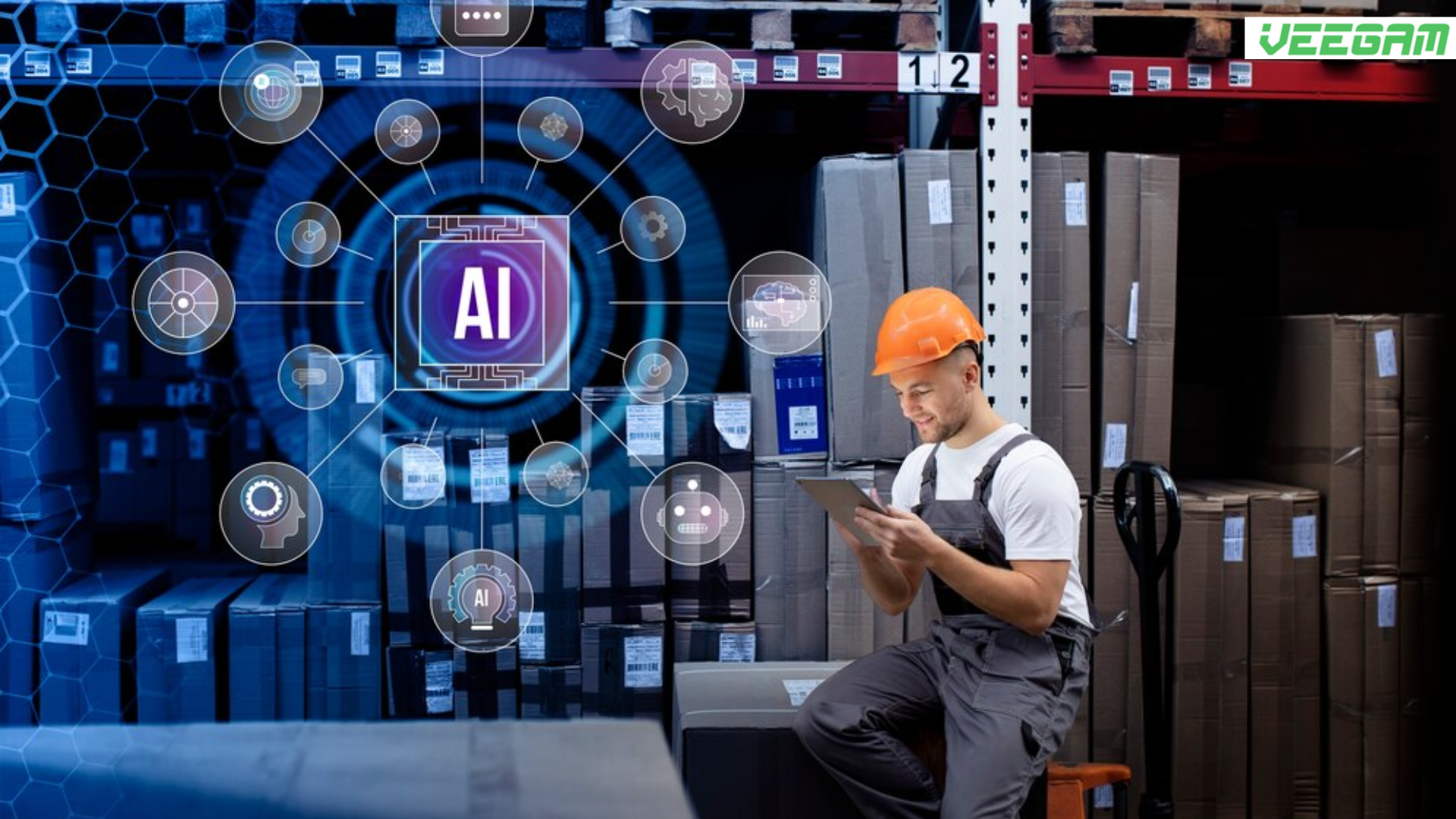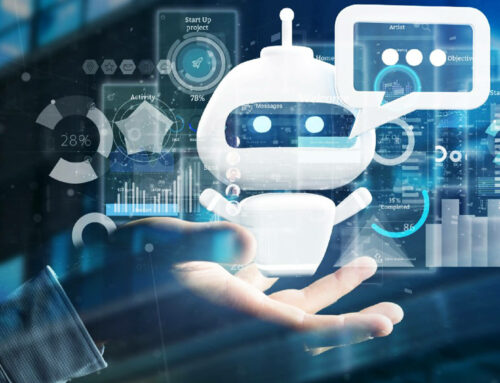Have you noticed how smart your gadgets are getting? From smartphones that understand your habits to smart home devices that adjust lighting and temperature for you, artificial intelligence (AI) is transforming the way we interact with technology. But how exactly is AI reshaping consumer electronics, and what should we look out for as AI in Consumer Electronics technology grows? Let’s explore some fascinating aspects of this evolution.

How AI is Changing the Face of Consumer Electronics In 2024
Have you ever wondered how artificial intelligence is making your gadgets smarter and more efficient? AI in consumer electronics is not just about cool features; it’s about transforming the way we interact with technology. From smartphones to smart TVs, AI-driven innovations are taking center stage in 2024. By using advanced algorithms and machine learning, AI can predict what you want even before you know it yourself. For example, voice assistants use AI to understand your commands and make life easier. Isn’t that fascinating?
AI is also being used in consumer electronics to revolutionize the experience for users. With smart sensors and AI-driven tools, devices can adapt to your habits, improving their performance over time. The impact of AI is clearly seen in various use cases, such as smart home systems that adjust lighting and temperature automatically. By integrating artificial intelligence, these devices aren’t just tools—they become intuitive companions. When you use AI in devices like smartphones, the technology keeps learning and evolving to serve you better.
Revolutionizing Wearable Tech with AI in Consumer Electronics
Have you ever thought about how wearables are becoming smarter and more connected to our daily lives? With AI in Consumer Electronics, wearables are not just fitness trackers anymore. They are integrating AI technology to provide features like facial recognition, automation, and real-time health tracking. This is how AI is changing the way we interact with technology. By using ai algorithms and new AI models, wearables are delivering insights and conveniences that are revolutionizing consumer electronics.
The consumer electronics industry is seeing a huge advancement in wearables, especially with innovations showcased at the Consumer Electronics Show. Companies like Samsung are leading this transformation by incorporating AI applications into their devices. This combination of AI and IoT allows wearables to interact seamlessly with other consumer devices, like your smart home or smartphone. The future of AI in the consumer electronics sector looks promising as these gadgets transform how we live. Here’s how AI-driven consumer electronics are impacting the consumer industry:
- Health Monitoring: Wearables use AI applications to track fitness, heart rate, and sleep in real-time.
- Seamless Connectivity: The integration of IoT enables wearables to sync with other electronic devices and systems.
- Personalization: Applications of AI in consumer products deliver customized insights and fitness plans.
- Enhanced Automation: Automation in wearables makes them smarter, like adjusting your smart home settings based on your preferences.
- User-Friendly Tech: Features like facial recognition and voice commands improve accessibility and convenience.
Making Appliances Intelligent: AI in Everyday Gadgets
Did you ever wonder how everyday appliances are becoming smarter? The presence of AI in gadgets like refrigerators, washing machines, and ovens is transforming how we interact with them. AI in Consumer Electronics is all about creating smarter, more efficient appliances that enhance the user experience in consumer electronics. With the help of AI and machine learning, these gadgets can learn user preferences, adjust settings automatically, and even provide recommendations. The potential of AI in making our lives simpler is truly exciting.
Next-Generation Consumer Electronics Devices
Appliances powered by AI are not just tools; they are becoming intelligent assistants. By leveraging ai capabilities and ai chips, these devices can connect to the Internet of Things (IoT), ensuring seamless communication with other connected devices. Whether it’s a voice command using natural language or an app-based control, the user experiences are getting more intuitive.
How Consumer Electronics Companies Leverage AI Technology
Leading consumer electronics companies are heavily investing in AI developments and implementing AI to create innovative products. From market research to analytics, companies are using the latest AI to understand customer needs and design gadgets that fit their lifestyles. Brands like Samsung are unveiling next-generation appliances that showcase the immense potential of AI.
AI Growth Across Various Industries
The rapid ai growth is impacting various industries, including home appliances. The integration of tools like ChatGPT in smart speakers or virtual assistants has opened new doors for interactive and efficient technology. AI is transforming the appliance industry by turning mundane tasks into automated and enjoyable experiences.
Appliances around AI are no longer just machines; they are becoming smart partners that redefine convenience in our lives.
How is AI improving user interfaces in devices like smartphones and smart home systems?
AI is revolutionizing user interfaces by making them smarter, smoother, and more personalized. Smartphones now use AI to predict what apps you’ll open, optimize battery usage, and even filter spam calls. Smart home systems learn your routines to adjust settings, like dimming the lights in the evening or turning up the temperature on chilly mornings.
Here’s what Jean Christophe Gabler, a writer, e-commerce marketer, and wellness champion, says about this:
“As AI gets better, things are becoming more like they used to be when we used technology. Our phones have AI that learns from the apps we use and shows us news or new apps based on how we’ve used them in the past. It’s like having a personal helper who knows what you like and what you might need next. In a smart home, you don’t need to do anything to make your life better. AI will change the lights and temperature based on how you usually use the space.”
Joe Robinson from qrcodeveloper.com also highlights AI’s impact:
“One of the improvements we’ve experienced is the use of AI in user behavior analytics to help us make iterative changes quickly, without having to wait for statistically significant tests to be carried out, which can take weeks or months. This has led to more improvements in the overall UX landscape over the past year than we’ve seen in the previous decade.”
Can AI make technology more intuitive and accessible for older populations?
Older adults often find modern technology intimidating, but AI is helping bridge this gap. By learning user preferences and adapting interfaces, AI is making technology easier for older people to use. Features like voice commands, large text, and automated settings allow them to engage with technology more naturally.
Here’s what Jean Christophe Gabler says:
“AI can help older people get better at using tech for sure. Older people may find it hard to use all the new tech. AI that changes things on its own after learning what people like could make things easier. AI can learn how to change things like the lights or temperature based on how a person uses their smart home every day. They’re not as hard to use now. YogiTimes Boutique wants everyone to be able to use all of our tech. We can help our older customers more by giving them a better and more natural experience with AI. It’s easy for them to get to our goods this way.”
Joe Robinson adds:
“AI has given us incredible progress in helping older populations, as well as those with disabilities, in that we can use a computer’s speed of analysis along with the reasoning of AI to find potentially non-accessible elements that could be left unnoticed by a development or QA team. AI has also given these populations more opportunities for accessible control over their smart home systems, such as far better voice recognition and integration.”
Are there privacy concerns with always-on AI in smart home devices?
Always-on AI can feel like a double-edged sword. On one hand, it offers convenience by collecting data to improve user experience. On the other hand, it raises serious privacy concerns. How safe is your data, and could it be misused?
Jean Christophe Gabler warns:
“Yes, tools that run all the time can be very invasive of your privacy. The info that these tools collect is always being added. This is meant to make our lives better, but it can be creepy to think about how much information is being grabbed. Someone can always get into your files or processes without your permission. This is something I really care about. YogiTimes Boutique wants all of our customers to feel safe, so we use strong security and are honest about how we use their data. People should trust us. That’s the most important thing we can do for them. In order to protect their privacy, we keep their details safe.”
Joe Robinson echoes this concern:
“One of the most worrying concerns we’re seeing recently with AI is the potential for unauthorised use of a person’s likeness. For example, cloning someone’s voice and using it to bypass security features such as those of banking apps or to send highly targeted relative-in-need scam messages using a person’s voice to trick a family member into sending money. Much like the SMS phishing scam, but far more believable to the receiver.”

Challenges and Opportunities for AI in Consumer Tech
Have you ever thought about how AI in Consumer Electronics is both exciting and challenging? While AI products have revolutionized the way we interact with technology, they also bring some hurdles to overcome. For instance, developing hardware and software that seamlessly integrates smart home devices like Alexa is no small task. At the same time, the ability of algorithms to analyze data and provide insights offers huge potential for innovation.
Opportunities in New AI Consumer Tech
- Enhanced Shopping Experiences: Generative AI in Consumer Electronics enables product recommendations based on preferences, offering a shopping experience tailored to individual needs.
- Wide Range of Applications: From managing photos and videos to controlling energy usage, AI products can perform a wide range of tasks.
- Shaping the Future: In the coming years, the industry is expected to grow, with natural language processing making natural language commands more intuitive and efficient.
- Energy-Efficient Solutions: AI in Consumer Electronics helps create energy-efficient devices, contributing to smarter, greener homes.
Challenges to Address
Despite the progress, challenges like managing global supply chains and ensuring that systems are accessible and secure remain significant. As AI continues to evolve, companies in the U.S. and beyond are leading the way in addressing these hurdles.
With its wide range of applications, AI in Consumer Electronics is enhancing user experiences and shaping the future of the consumer electronics industry. The possibilities are endless if these challenges are handled thoughtfully!


